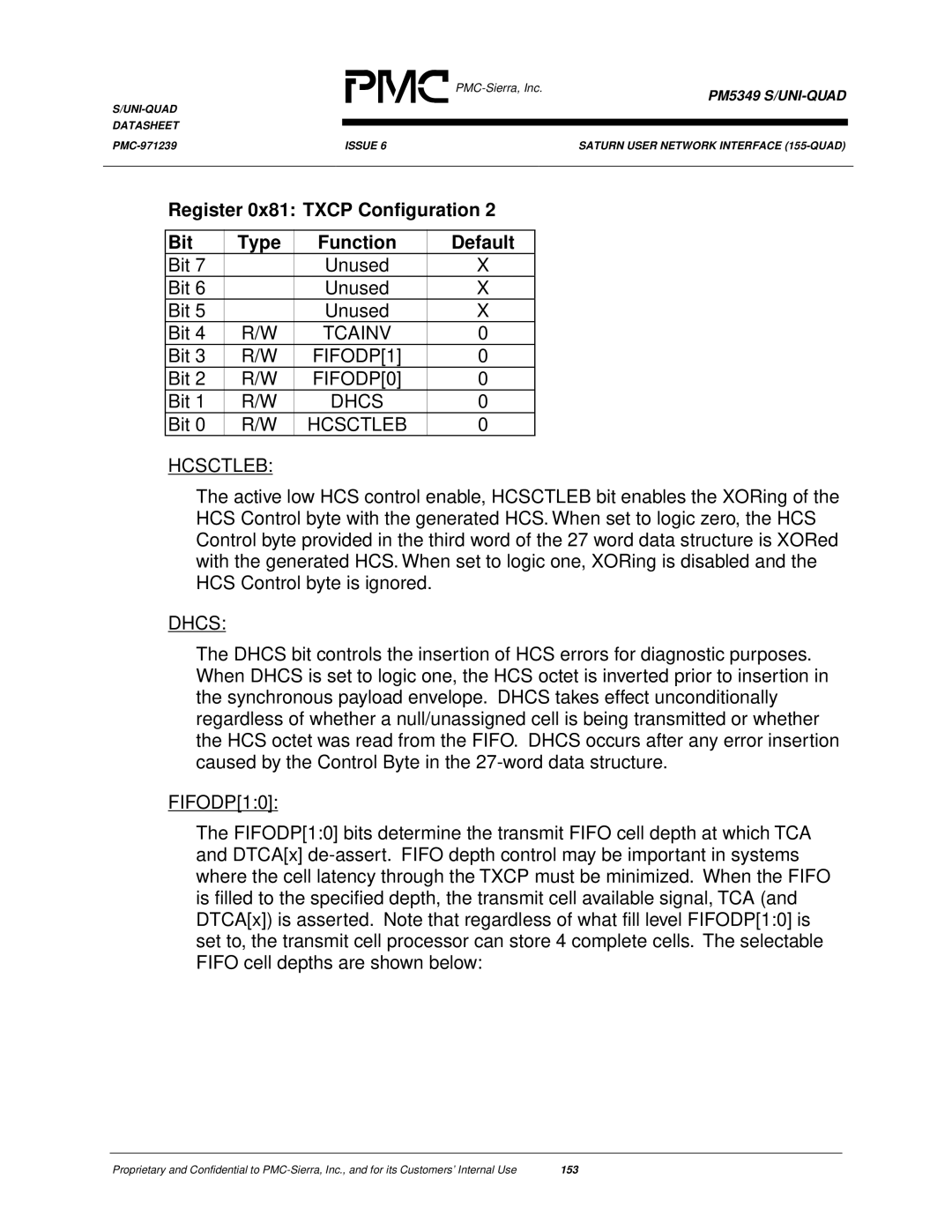
|
| PM5349 |
| |
|
|
| ||
|
|
|
| |
DATASHEET |
|
|
|
|
|
|
|
| |
|
|
|
| |
ISSUE 6 |
| SATURN USER NETWORK INTERFACE |
| |
|
|
|
|
|
Register 0x81: TXCP Configuration 2
Bit | Type | Function | Default |
Bit 7 |
| Unused | X |
Bit 6 |
| Unused | X |
Bit 5 |
| Unused | X |
Bit 4 | R/W | TCAINV | 0 |
Bit 3 | R/W | FIFODP[1] | 0 |
Bit 2 | R/W | FIFODP[0] | 0 |
Bit 1 | R/W | DHCS | 0 |
Bit 0 | R/W | HCSCTLEB | 0 |
HCSCTLEB:
The active low HCS control enable, HCSCTLEB bit enables the XORing of the HCS Control byte with the generated HCS. When set to logic zero, the HCS Control byte provided in the third word of the 27 word data structure is XORed with the generated HCS. When set to logic one, XORing is disabled and the HCS Control byte is ignored.
DHCS:
The DHCS bit controls the insertion of HCS errors for diagnostic purposes. When DHCS is set to logic one, the HCS octet is inverted prior to insertion in the synchronous payload envelope. DHCS takes effect unconditionally regardless of whether a null/unassigned cell is being transmitted or whether the HCS octet was read from the FIFO. DHCS occurs after any error insertion caused by the Control Byte in the
FIFODP[1:0]:
The FIFODP[1:0] bits determine the transmit FIFO cell depth at which TCA and DTCA[x]
Proprietary and Confidential to | 153 |
